Carbon capture and low-carbon hydrogen are central to any possibility of supplying liquid fuels compatible with net zero, reports Andy Extance
-
Decarbonisation as a survival strategy: UK refineries are under pressure from global competition, environmental regulations and declining fuel demand. Companies like Essar Energy Transition (EET) at Stanlow are investing in low-carbon technologies – especially hydrogen and carbon capture – to remain viable and avoid closure.
-
Hydrogen and carbon capture at the core: Hydrogen, particularly blue hydrogen (produced with carbon capture), is central to refinery decarbonisation. EET plans to use hydrogen for heat and power, while ExxonMobil’s Fawley refinery is upgrading to produce ultra-low sulfur diesel and jet fuel using hydrogen.
-
Industry-wide transformation challenges: The UK’s refining sector has shrunk from 18 to 5 refineries. Each faces unique challenges based on location, infrastructure and access to carbon capture. Some, like Humber, are adapting by producing high-value products like graphite coke for batteries and sustainable aviation fuel (SAF).
-
Policy and economic hurdles: The UK’s carbon pricing and lack of import tariffs on high-emission fuels disadvantage domestic refineries. Industry leaders argue for stronger government support and border adjustment mechanisms to level the playing field and support long-term decarbonisation goals.
This summary was generated by AI and checked by a human editor
‘Refineries can never be quiet,’ says Yakubu John, from the University of Bradford, UK. Steam, used for heating and breaking down the hydrocarbon molecules in oil, makes hissing sounds as it moves through the miles of pipe snaking across such sites. ‘Then you also have noise from where conversions are happening,’ John explains. Most of his experience comes from working with fluid catalytic cracking units, comprising a pair of metal cylinders. One is a riser reactor about a metre in diameter and over 30m high. The other is a regenerator, lower in height but up to eight metres in diameter.
One key refinery process separates crude oil into different parts by vacuum distillation. However, a refinery typically produces most of its gasoline, diesel and jet fuel by cracking the thickest, heaviest products after the distillation, John explains. That can involve steam vaporising heavy oil chemicals and passing them through catalysts, usually acidic crystalline solids such as zeolites, that break down larger hydrocarbon molecules into smaller ones. Another important refining process is reforming, which converts straight chain hydrocarbons to branched, cyclic and aromatic ones, and sometimes hydrogen. Reformed hydrocarbons have higher octane numbers, meaning that they can be used in vehicle engines at higher pressures without detonating.
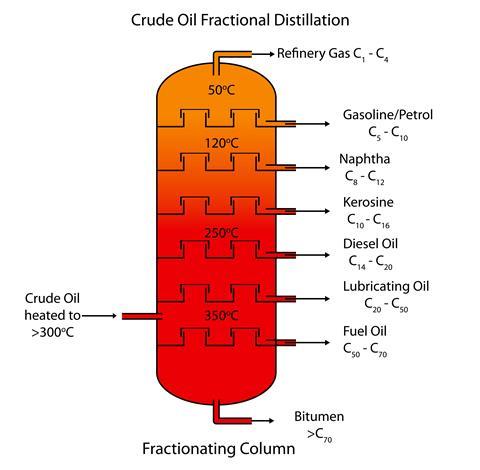
Cracking and reforming are at the heart of Essar Energy Transition (EET) Fuels’ Stanlow site in the UK, which in spring 2025 completed its latest ‘turnaround’ period. During such planned shutdowns, refineries traditionally do extensive maintenance, repairs and upgrades. But this time, the Stanlow site has commissioned the £45 million furnace that it bought in 2022 to provide the heat it needs for refining and will eventually use hydrogen, as it seeks to become the UK’s first low-carbon refinery. ‘We’re firing it up as we speak,’ says Tony Fountain, EET’s managing partner, though he notes it will initially run off hydrocarbon gases produced within the refinery.
This investment in the future is a stark contrast to the UK’s oldest refinery, in Grangemouth on the Firth of Forth. Petroineos is currently closing it down, which it announced in September 2024, to focus the site instead on fuel imports. The site ‘faces significant challenges due to global market pressures and the energy transition’ according to Iain Hardie, Petroineos’ head of legal and external affairs. ‘Refining is a globally competitive industry, and it is increasingly difficult for us to compete with bigger, more modern and efficient sites in the Middle East, Asia and Africa,’ Hardie adds.
Following Grangemouth’s closure, the UK will have just five oil refineries, down from a peak of 18 in the 1970s. This long-term decline has a combination of causes, including the global competition that Hardie cites. Economically, sites have struggled to recover from the financial crisis of 2008 and the Covid-19 pandemic. Environmentally, prices on carbon emissions and plans to phase out petrol and diesel cars by 2030 are putting them under further pressure.
Ambitiously, EET believes that decarbonisation can help Stanlow thrive for as long as possible. ‘There’s no one way you’re going to survive,’ says Fountain. Although there are many things EET needs to get right, ‘becoming the first decarbonised refinery can save us £200 million a year of carbon taxes eventually’. Yet he warns that ‘the government needs to support us and needs to do much better’ in attaining that target.
Competitive and clean
In principle, all refineries are versatile enough to use any crude oil feedstock and produce a wide range of carbon-based products, says John. That’s helpful when the oil wells they use first dry out. However, they typically have production strategies tailored to specific combinations of feedstock to maximise their profitability. John’s research involves simulating refineries to help optimise those strategies. One important factor in designing them is hydrogen, which refineries use in many ways, from cracking to removing impurities like sulfur and nitrogen.
All refineries are different, notes Jamie Baker, director of external relations for Fuels Industry UK (FIUK), a trade association whose members include refining companies. Important factors include what types of crude oil they can handle most optimally, and their size. ‘As such, there is unlikely to be any universal pathway to remaining profitable,’ he adds. One commonality, however, is that together refineries are the largest users and producers of hydrogen in the UK, Baker says.
FIUK sees three general options ‘to operate successfully in a net zero environment’. First, refiners will need to keep up with technology advances in catalysts and solvents, energy and other operational efficiencies that can reduce costs. Second, they must capture carbon emissions and/or reduce them; for example, by replacing refinery fuel gases with low-carbon hydrogen. This will require hundreds of millions of pounds of investment, he notes. The third phase will be moving away from fossil-derived feedstocks to bio- and synthetic fuels.
Surviving refineries will be cleaner and more efficient
Notably, the UK drilling for more oil would likely not boost its refineries’ profitability. Just 7% of crude oil in UK refineries came from UK fields in 2023, down from 14% in 2022, Baker explains. He says that’s because their oil contains increasing amounts of sulfur – referred to as sour crude, from the days when early prospectors tasted oil to assess its quality. Even though they could potentially refine locally produced oil, UK refineries seek to process sweeter, lower sulfur, crudes.
Other refineries in Europe and North America also face similar competitive and carbon price challenges, explains Eleanor Budds, research and analysis director at S&P Global Commodity Insights. Demand for fuels is generally falling as transport electrifies, while supply is growing. Older and less complex refineries are usually at a disadvantage when competing with new refineries in Asia, the Middle East and Africa for a share in these declining markets. Carbon costs will accelerate closure for some and force investment in new technologies and more efficient operations, according to Budds. ‘Surviving refineries will be cleaner, more efficient, and better adapted to evolving demand trends,’ she says.
Budds adds that the UK is well-placed for carbon capture, with North Sea oil fields, for example, able to ‘provide ideal capacity for storing carbon’. But Europe is ‘at a strategic disadvantage when compared to US Gulf Coast refiners, due to much higher variable cost factors such as electricity costs, natural gas prices and resulting costs of hydrogen’. This advantage originates from the US producing more fossil fuels than any other country in the world. Such seemingly random factors are also behind the differing fortunes of the remaining UK refineries.
Then there were five
The big historical names in oil refining are gradually withdrawing, observes Julian Gregory from the University of Exeter, UK. ‘Refining is a manufacturing process, needs different skills, and can be very low profit margin,’ Gregory tells Chemistry World. Shell sold its last UK refinery, at Stanlow, to EET in 2011. BP sold Grangemouth to Ineos in 2005 and then sold its last refinery in Coryton in Essex in 2006, which then closed in 2012.

However, ExxonMobil still operates its Fawley refinery. The other remaining UK sites include Milford Haven in Pembrokeshire, operated by Valero, and Humber, operated by Phillips 66. Both companies are refining specialists, Gregory notes. The fifth UK refinery is Lindsey, which is operated by Prax right next to Humber; Gregory calls it ‘the most vulnerable’ to closing next. Gregory adds that the UK’s current net zero policy is ‘not good news’ for Milford Haven and Fawley, as neither have access to good sites for carbon capture. Chemistry World approached the operators of all the refineries, with all declining to respond directly other than EET, while ExxonMobil shared prior comments.
By contrast, Gregory considers the Humber refinery, which abuts the North Sea, to be ‘flourishing despite adversity’. That’s because it’s the only European facility producing graphite coke for lithium-ion batteries used in electric vehicles and consumer electronics. Coking is the most extreme form of cracking, converting ‘bottom of the barrel’ oil into products that are usually further cracked. It produces solid carbon-rich coke as a byproduct, which can be converted to graphite by heating above 2500°C in an oxygen-free atmosphere
Gregory believes Phillips 66 was lucky, because when the refinery was built with a graphite-coke-producing configuration, they couldn’t have anticipated the increase in this product’s value. ‘Because of that, they’ve been able to start a transitioning process,’ he says. ‘I suspect we’re probably going to end up with two refineries, Humber and Stanlow.’
For example, Humber has been able to move first to meet the UK’s sustainable aviation fuels (SAF) mandate, which came into force on 1st January 2025. The mandate requires jet fuel to include 2% SAF, explains FIUK’s Baker. He notes that Phillips 66 is currently the only SAF producer of scale, making it from used vegetable oil.
Hydrogen’s transformative potential
Despite its lack of easy access to carbon capture, on its three-mile-long south coast site, ExxonMobil is not giving up without a fight.
In 2025, the Fawley refinery is set to complete an £800 million upgrade, so that it can help resolve a nationwide challenge. The fuels the UK demands most are ultra-low sulfur diesel (ULSD) and jet fuel, but its refineries were originally designed to produce petrol. ExxonMobil has therefore invested in a hydrogen production unit and new and expanded facilities to use the hydrogen. One is a hydrotreater that converts low-sulfur diesel to ULSD. It’s also built a jet fuel pipeline direct to its terminal near Heathrow airport.
Overall, producing hydrogen allows Fawley to be more flexible in which feedstocks it uses, processing hydrotreated vegetable oil into renewable diesel, for example, and potentially making SAF. ExxonMobil says that this will make it more competitive. ‘There is a lot of molecular magic we can do with this kit,’ said Nick Bone, Fawley’s plant manager, in a press briefing in 2024.
EET‘s future plans also rely on harnessing hydrogen in a pioneering way. ‘We are going to be the first low-carbon hydrogen plant in the UK,’ says Fountain. This form of low-carbon hydrogen, often referred to as blue, is produced by steam methane reforming, capturing the carbon dioxide emissions. This is possible thanks to HyNet, one of two ‘Track 1’ CCS clusters the government has committed to provide £21.7 billion to support over the next 25 years. HyNet’s carbon capture and storage network is being developed by Italian energy giant Eni and is due to start operation in 2027.
We started producing blue hydrogen as a way of decarbonising the refinery, but we’ve got interest for more hydrogen
With a 350MW blue hydrogen plant, HPP1, expected online sometime after 2028, EET is the leading candidate to store emissions in Eni’s network. Around one third of its hydrogen will feed into the hydrogen furnace, and the other two thirds will go into a new combined heat and power plant. The hydrogen will therefore provide enough clean heat and electricity to meet the refinery’s needs. Nearby facilities will also use some hydrogen, with EET being in negotiations to supply a nearby glass factory. Fountain tells Chemistry World that the company expects to make a commitment to HPP1, known as a final investment decision, in autumn 2025.
EET is also exploring green hydrogen, where renewable energy breaks water into its component elements. However, green hydrogen costs three to four times as much to make as blue hydrogen in the UK, so it’s a lower priority for the company. Fountain says that blue hydrogen production might ramp up quickly, with HyNet potentially able to accommodate emissions from more than 10 plants of HPP1’s scale. ‘We started blue hydrogen very much as a way of decarbonising the refinery, but actually, we’ve got interest for more hydrogen,’ he says. Meanwhile EET is already looking at producing green hydrogen in India, where it can be made more cheaply in part due to the potential for abundant solar power. It hopes to react it with carbon dioxide to make methanol, which can then be shipped to Stanlow to make SAF.
The other CCS cluster funded by the UK government is the Northern Endurance Partnership, involving projects across Teesside and the Humber to secure storage under the North Sea. ‘Construction is expected to commence from the middle of 2025 with start-up expected in 2028,’ says George Parker, a spokesperson for the partnership. These could potentially include the Lindsey and Humber refineries. However, Prax and Phillips 66 are not among the project’s main partners, both having been involved in potential Track 1 CCS projects that the government didn’t choose to back.
The future of refineries will be to make green hydrogen
Meanwhile, the UK Government has not yet funded a potential Track 2 CCS scheme called Project Acorn that could include Grangemouth. Petroineos has included the CCS scheme in joint efforts with the UK and Scottish governments to explore low-carbon options such as green hydrogen, methanol and ammonia production that could be developed at Grangemouth. They cannot immediately replace the job opportunities or economic activity supported by the refinery, but ‘could create a long-term, sustainable green economic hub in this part of Scotland’, Hardie argues. Such green technologies are a common vision for the future – yet attaining them is far from straightforward.
Cheap energy and tariffs
Inevitably, as long as refineries produce liquid fuels originating from oil, they won’t completely prevent carbon dioxide emissions, and so the insidious progress of global heating will continue. For Gregory therefore the UK’s energy future has two components – green electricity, mostly powered by offshore wind, and ultimately green hydrogen. ‘At the moment, when the wind’s not blowing, we produce our electricity from gas,’ he says.
In his vision, the country will have enough wind generation capacity to meet its energy needs even when wind is at its slowest. At other times, surplus electricity will be available very cheaply to produce green hydrogen. ‘The future of refineries, in my opinion, if they are to exist, they will be there to make green hydrogen,’ Gregory says. ‘You might well have a blue hydrogen stepping stone. That will not be the future of oil refining, but I think it’s a necessary evil, in order to engage the hydrocarbon industry.’
The UK is seeking to fund and incentivise this transition through its Emissions Trading Scheme, which currently puts a price of £41.84 on each tonne of carbon dioxide emitted. However, Fountain notes that many countries do not have carbon pricing schemes. The UK imports fuels from such countries, putting UK refineries at a disadvantage. The country plans to implement a carbon border adjustment mechanism programme by 2027, placing import tariffs on products from countries without carbon pricing, but excluding refined products.
‘I think it needs to have top government priority because we’re paying carbon taxes,’ says Fountain. For Stanlow and the rest of the UK to be a sustainable base for refining, there must be a border scheme ‘or you wait for everybody else to do carbon taxes too’, Fountain says. ‘The equivalent of 2p a litre would do it.’
Ultimately companies in declining industries must be more profitable if they are to survive while their less profitable competitors close. With EET Fuels now set to ship fuel from Stanlow to Grangemouth, that’s what’s happening with the remaining UK refineries – and now decarbonisation looks to be the path to profitability and survival. ‘Our strategy is to be the last man standing,’ says Fountain. ‘Is that a 100-year strategy? No. Is it a decades-long strategy? Yes.’
Andy Extance is a science writer based in Exeter, UK
Update 18 Jun 2025: The diameter of a regenerator was corrected
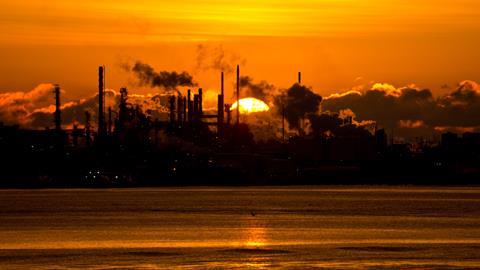





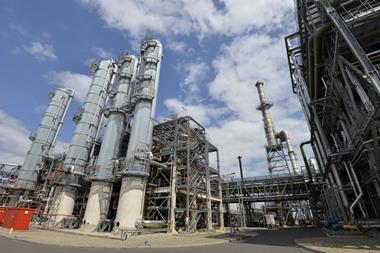
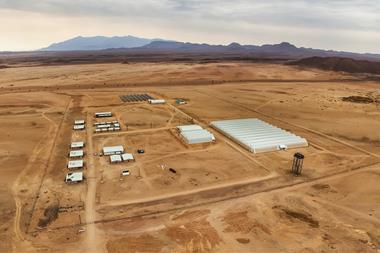
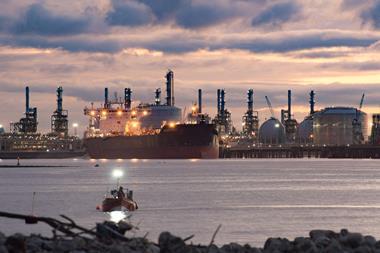
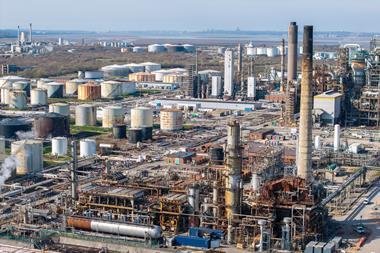

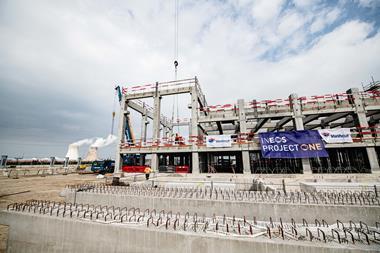






No comments yet